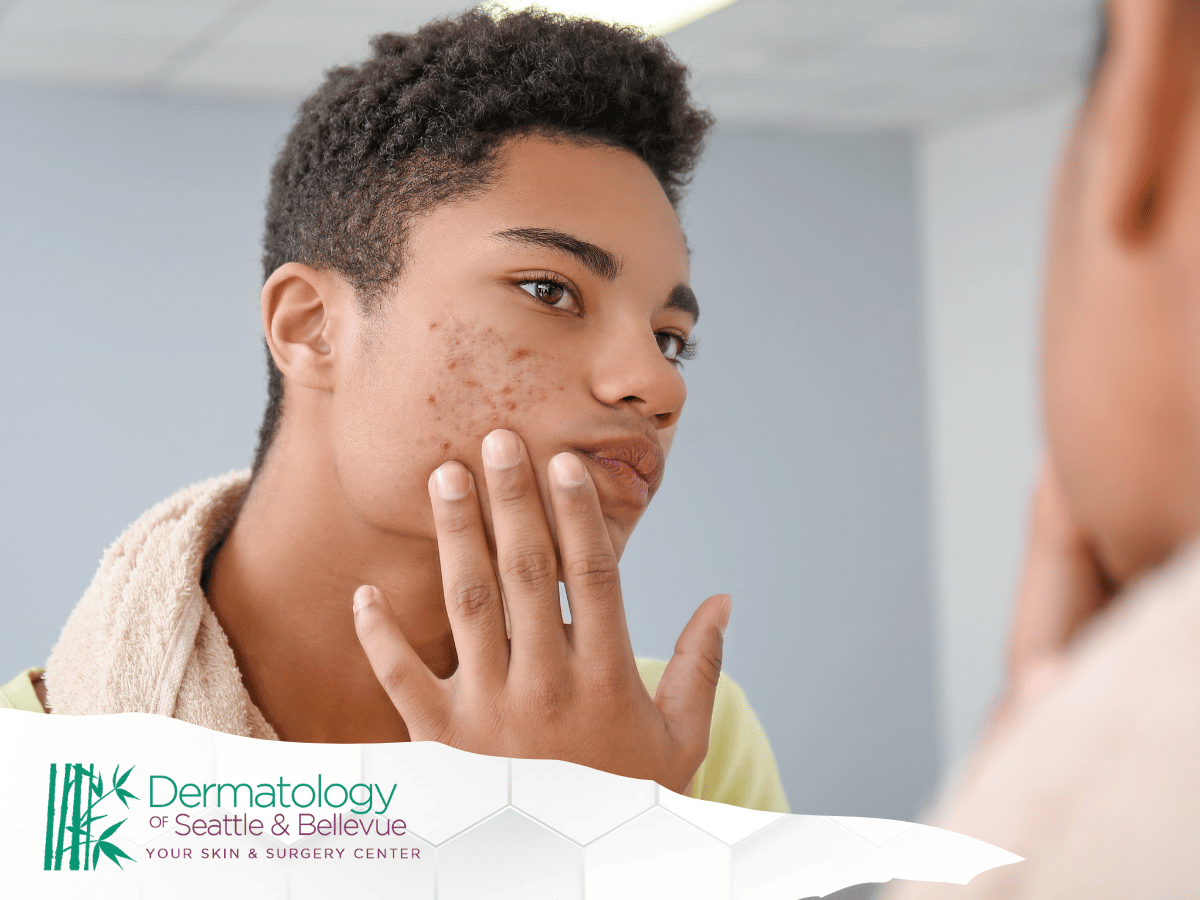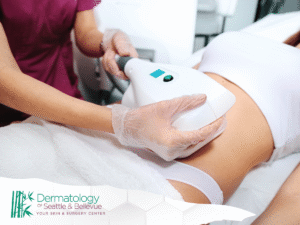Seattle’s mix of wet winters and mild summers creates a distinct environment for your skin. While many think acne is only driven by hormones or diet, regional factors—from humidity to water quality—play a crucial role in flare-ups. Understanding these local triggers helps you craft a personalized acne treatment plan that actually works.
Whether you struggle with pimples in the summer months or notice breakouts amid winter’s chill, pinpointing Seattle-specific causes puts you on the path to clear skin and lasting results.
Understanding seattle’s climate and skin health
Seattle’s reputation for rain and overcast skies masks wide swings in humidity and temperature throughout the year. High moisture levels in spring and summer can overwhelm your skin barrier, while cold, dry winter air strips away protective oils. These swings challenge skin cell turnover and can lead to:
- Clogged pores from trapped dead skin cells and excess sebum
- Increased breakouts as your barrier struggles to regulate oil production
- Skin irritation and sensitivity when barrier function is compromised
- Uneven texture and dullness due to impaired cell renewal
Winter months: dryness and barrier breakdown
During winter, indoor heating and frigid outdoor air sap moisture from your skin, weakening its natural barrier. As dead skin cells accumulate, pores become clogged, paving the way for acne breakouts. Key winter triggers include:
- Low humidity: Accelerates skin dryness and irritation.
- Over-cleansing: Strips essential oils, prompting excess oil production.
- Thick moisturizers: Can trap sweat under layers, creating a breeding ground for bacteria.
- Hot showers: Melt sebum but leave skin flakey once cooled, leading to dead skin cell buildup.
Combat winter-driven acne by balancing hydration with gentle cleansing and avoiding overly occlusive skincare products.
Summer humidity: sweat, water, and breakouts
Summer in Seattle brings higher temperatures and muggy air that skyrocket sweat production. When sweat mixes with natural oils and acne products, it can clog pores, trigger maskne under your face covering, and cause pimples to appear unexpectedly. Keeping skin clean and breathable during outdoor activities is essential to prevent sweat-induced acne triggers.
Maskne: indoor and outdoor mask use
Extended mask wear—whether commuting on Seattle’s buses or sheltering from drizzle—creates a warm, humid microclimate against your face. This “maskne” arises when sweat, oil, and friction combine under the mask, leading to breakouts along the jawline and cheeks. Switching to breathable, moisture-wicking masks and washing reusable masks after each wear can help minimize irritation.
Water quality impacts on skin and acne
Seattle’s tap water, treated with chloramines and variable mineral content, can influence skin health. Hard water tends to leave mineral deposits that:
- Disrupt your skin barrier by stripping natural oils
- React with cleansers to form irritating residues
- Clog pores, increasing pimples and blackheads
- Elevate dryness or overproduction of sebum
Installing a simple shower filter or rinsing with purified water post-shower can reduce these water-induced acne triggers.
Pollution and particulate matter on skin barrier
Urban and suburban environments around Seattle carry fine particulate pollution—like vehicle exhaust and industrial emissions—that settles on your skin daily. These particles penetrate clogged pores and weaken the skin barrier, exacerbating inflammation and acne breakouts. Incorporating a gentle, twice-daily cleansing routine and using antioxidant-rich serums helps defend against environmental pollutants.
Hormonal acne vs environmental factors
While hormonal acne stems from internal fluctuations—often linked to adult acne flare during menstrual cycles—Seattle’s environment can intensify breakouts. Elevated humidity and sweat in summer months amplify sebum production, creating a perfect storm when combined with hormone-driven oil surges. Addressing hormonal acne here means layering treatments: regulate internal triggers with retinoids or dermatologist-prescribed therapies, then fortify your skin barrier against external stressors like humidity and pollution.
Skincare routine essentials for seattle residents
A seasonally adaptable skincare routine is your first defense against local acne triggers. In summer, focus on lightweight, water-based products that clear sweat and debris without stripping moisture. In winter, swap in richer creams to reinforce the skin barrier. Core essentials include:
- A gentle cleanser to remove oil, dirt, and pollution.
- Broad-spectrum acne treatment serums (benzoyl peroxide or salicylic acid).
- Lightweight moisturizer or gel with hyaluronic acid to maintain hydration.
- Daily sunscreen to prevent UV-induced inflammation and post-inflammatory hyperpigmentation.
Choosing a gentle facial cleanser
Selecting the right gentle cleanser lays the groundwork for effective acne treatment:
- Free of harsh sulfates and fragrances that strip natural oils
- pH-balanced formula to preserve your skin barrier
- Contains mild exfoliants (like lactic acid) to clear dead skin cells
- Non-comedogenic and suitable for sensitive or eczema-prone skin
- Formulated with soothing ingredients (e.g., aloe vera or hyaluronic acid) to reduce redness
Exfoliation: removing dead skin cells effectively
Regular exfoliation helps prevent clogged pores by sloughing away dead skin cells that trap oil and debris. Use a gentle chemical exfoliant—like salicylic acid or an enzymatic scrub—1–2 times per week to maintain clear pores without irritating your skin barrier.
Acne treatments: benzoyl peroxide and retinoids
opical treatments form the backbone of many acne treatment plans. Benzoyl peroxide targets acne-causing bacteria, while retinoids accelerate skin cell turnover to keep pores clear. For best results:
- Apply benzoyl peroxide (2.5–5%) to active breakouts once daily.
- Use a retinoid serum or cream at night, starting every other evening to build tolerance.
- Follow with a lightweight, non-comedogenic moisturizer to minimize dryness.
In-office options: chemical peels and laser therapy
When at-home acne treatments aren’t enough, Dermatology of Seattle offers professional procedures to reduce breakouts and improve skin texture:
- Chemical peels: Controlled exfoliation that clears clogged pores and boosts skin cell turnover.
- Laser therapy: Targets acne bacteria and reduces inflammation without downtime.
- Extractions: Manual removal of blackheads and whiteheads under sterile conditions.
- Customized treatment plans: Combining in-office procedures with topical regimens for optimal results.
Acne scars: prevention and treatment strategies
Preventing scars starts early—treat active breakouts promptly and avoid picking at pimples. For existing acne scars:
- Topical retinoids and vitamin C serums can improve skin cell turnover and reduce discoloration.
- Microneedling stimulates collagen to smooth indented scars.
- Chemical peels promote fresh skin growth and help fade blemish marks.
Prevention: sunscreen and protective measures
Daily sunscreen use is a cornerstone of acne treatment and prevention. UV exposure worsens post-inflammatory hyperpigmentation from acne lesions. Opt for:
- Broad-spectrum SPF 30+ sunscreen labeled “non-comedogenic.”
- Lightweight, water-resistant formulas ideal for summer months and sweat.
- Protective clothing—wide-brimmed hats and UV-blocking fabrics—for extra coverage.
Treatment plan: combining topical treatments and skincare
An effective acne treatment plan integrates multiple approaches:
- Morning: Gentle cleanser → acne treatment serum (benzoyl peroxide) → lightweight moisturizer → sunscreen.
- Evening: Gentle cleanser → retinoid application → hydrating moisturizer with hyaluronic acid.
- Weekly: 1–2 sessions of chemical exfoliation or enzyme masks to clear dead skin cells.
These consistent steps help manage breakouts, support skin health, and work toward clear skin.
Monitoring and testing: when to see a dermatologist
If acne persists despite a solid treatment plan, professional evaluation can identify underlying issues and refine your approach. Consider booking a dermatology appointment if you experience:
- Frequent, painful breakouts that disrupt daily life
- Sudden flare-ups of hormonal acne in adult patient
- Scarring or hyperpigmentation that doesn’t improve with topical treatments
- Suspected rosacea, eczema, or other skin barrier disorders mimicking acne
Your dermatologist may recommend tests—like hormone panels or allergy screenings—or adjust therapies with prescription retinoids, oral antibiotics, or in-office procedures for optimal results.
Disclaimer: this information is for educational purposes only
The content above is intended to provide general guidance on acne triggers and treatments unique to Seattle’s climate. It does not replace personalized medical advice. Always consult a qualified dermatologist or healthcare provider before starting any new skincare regimen or treatment plan.








